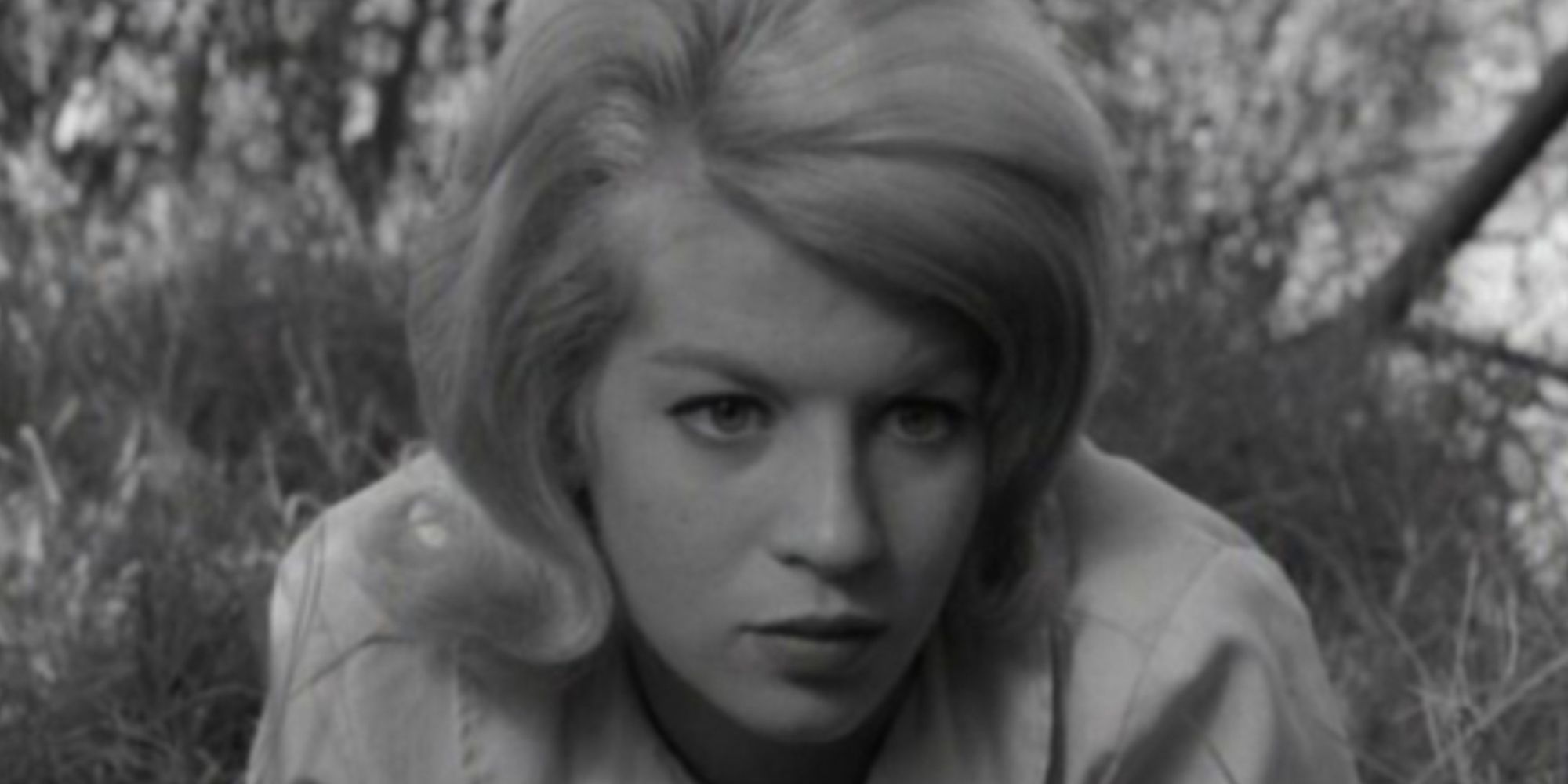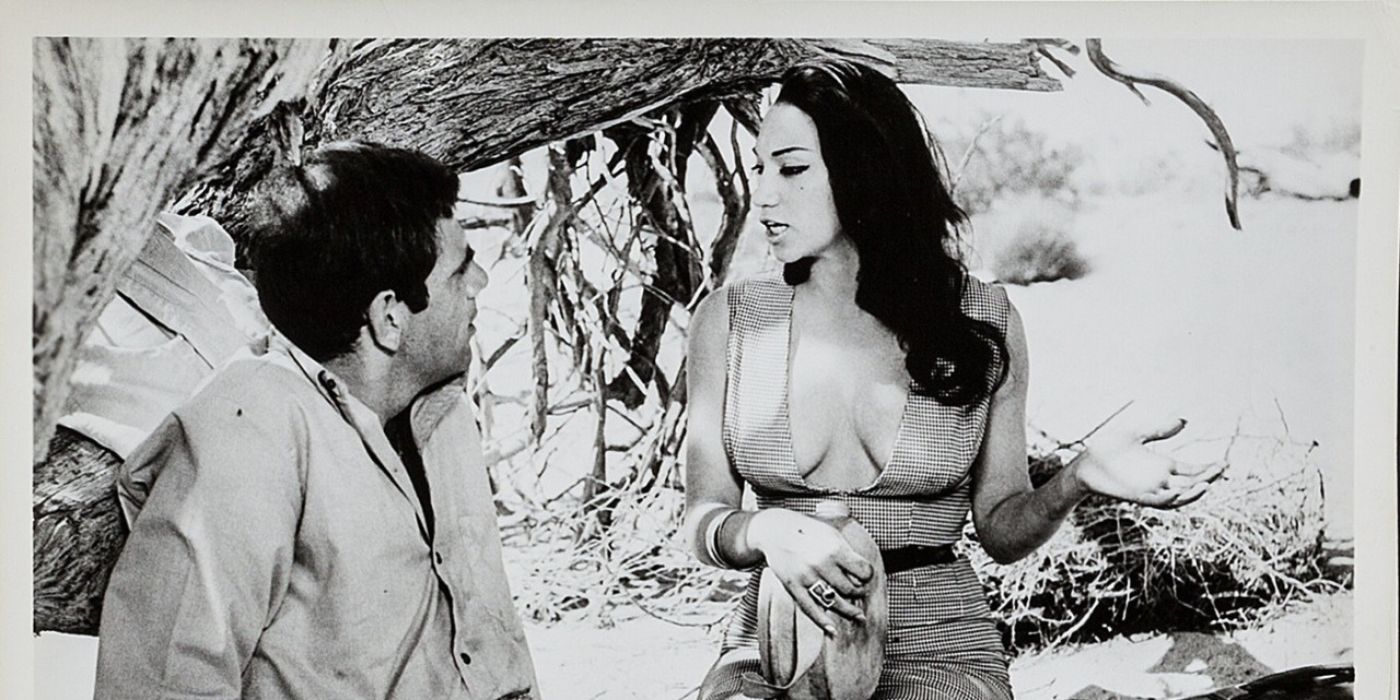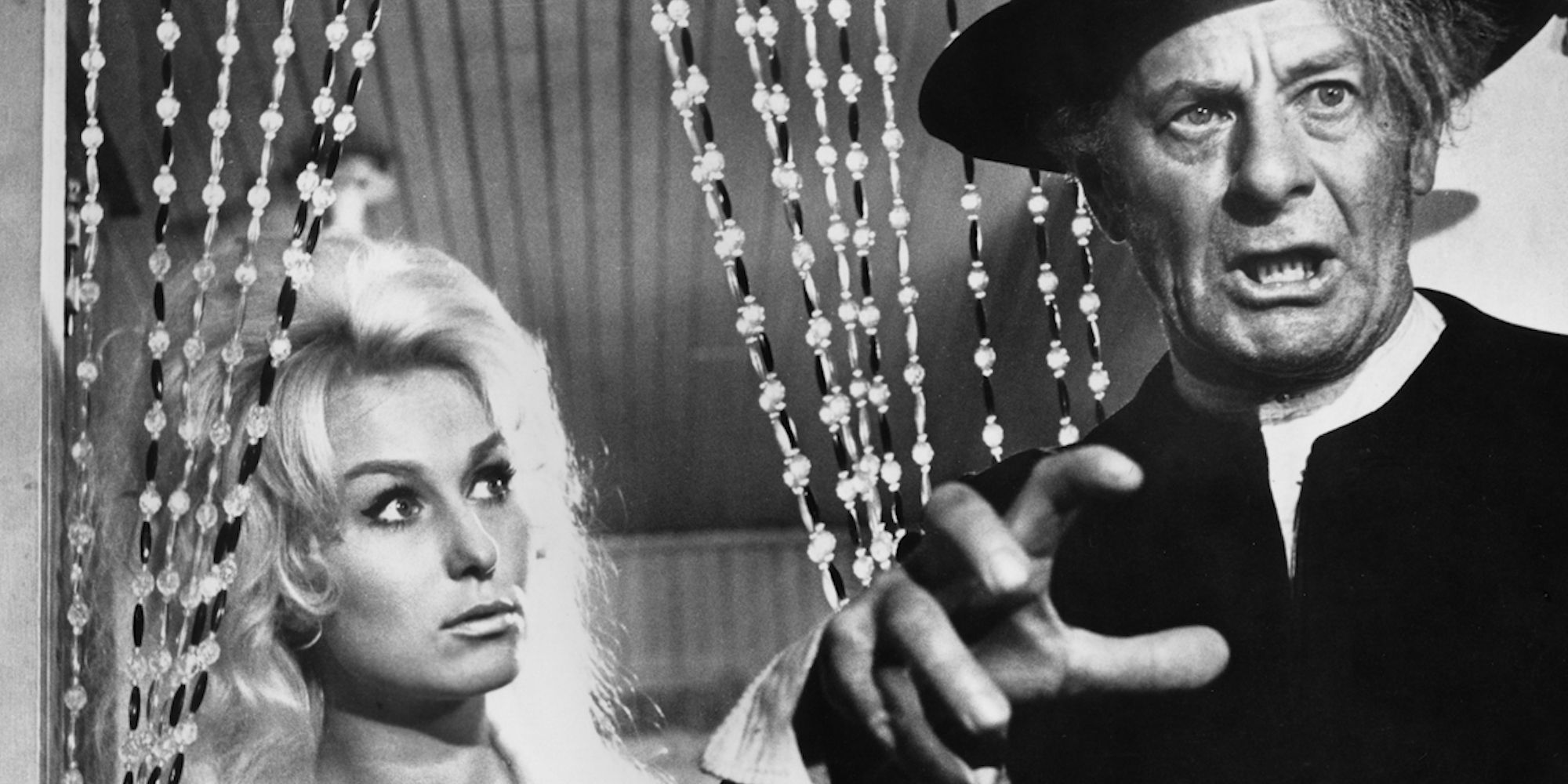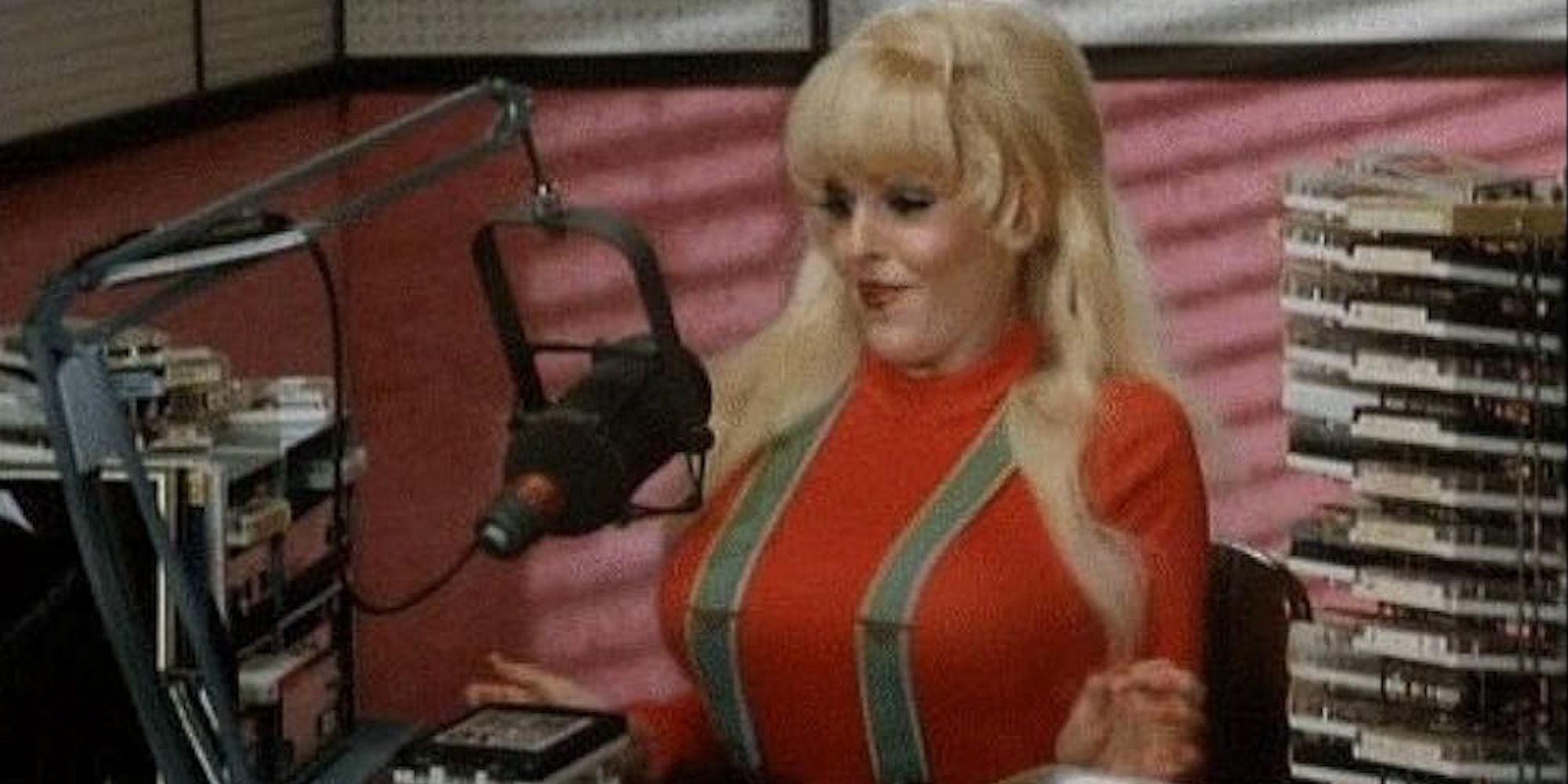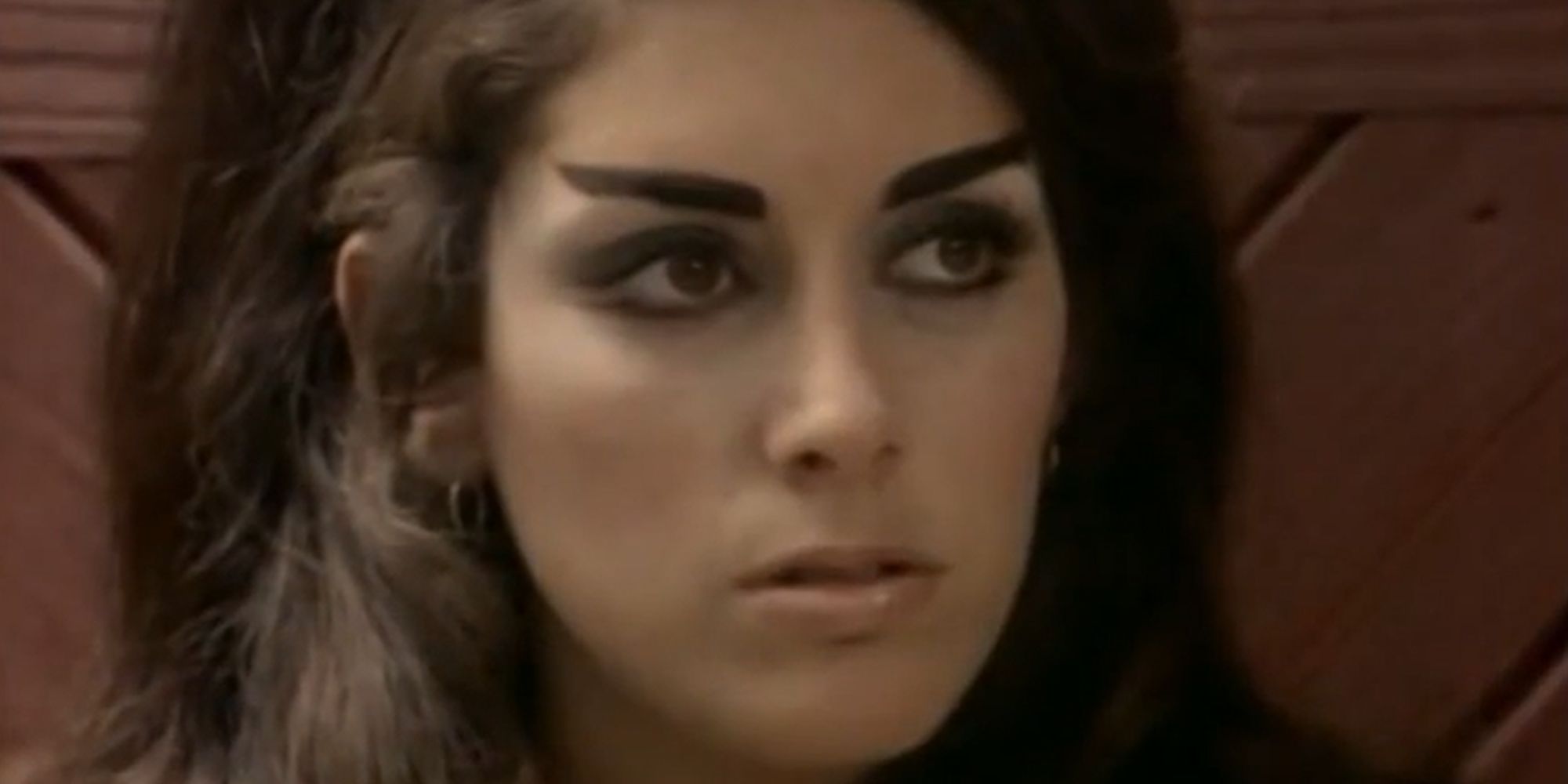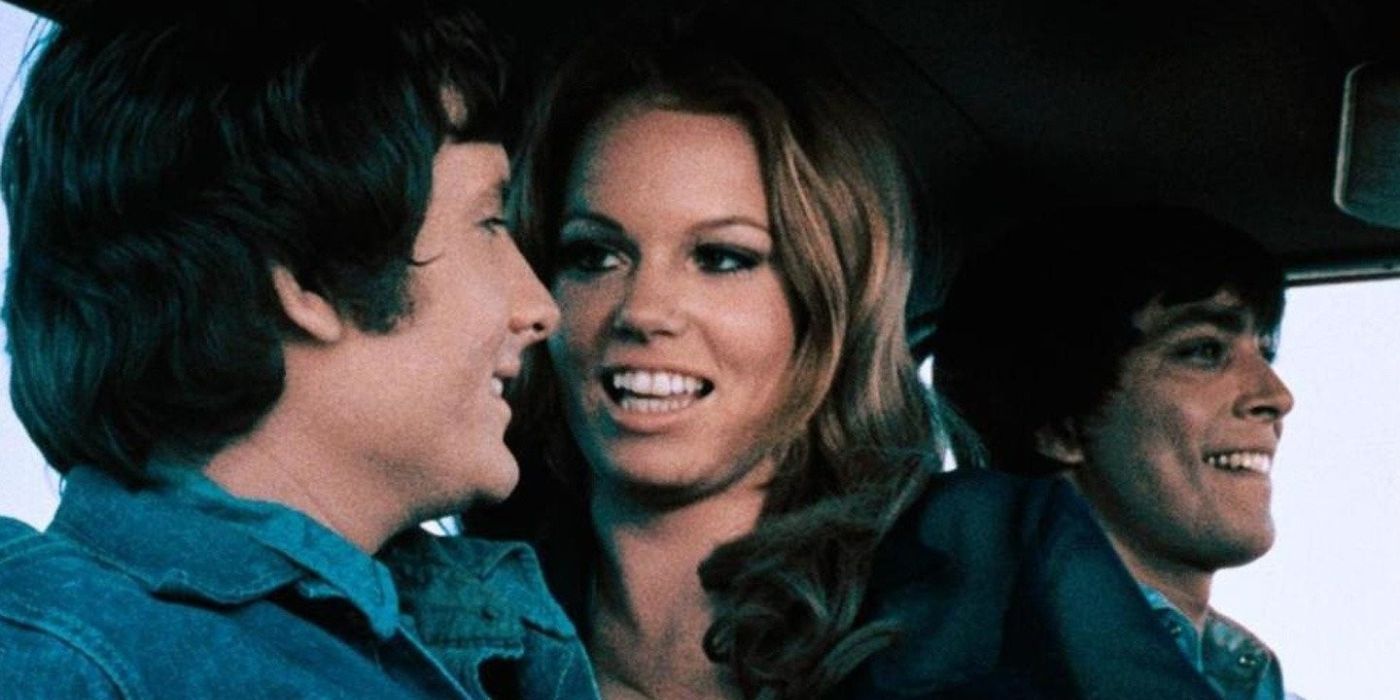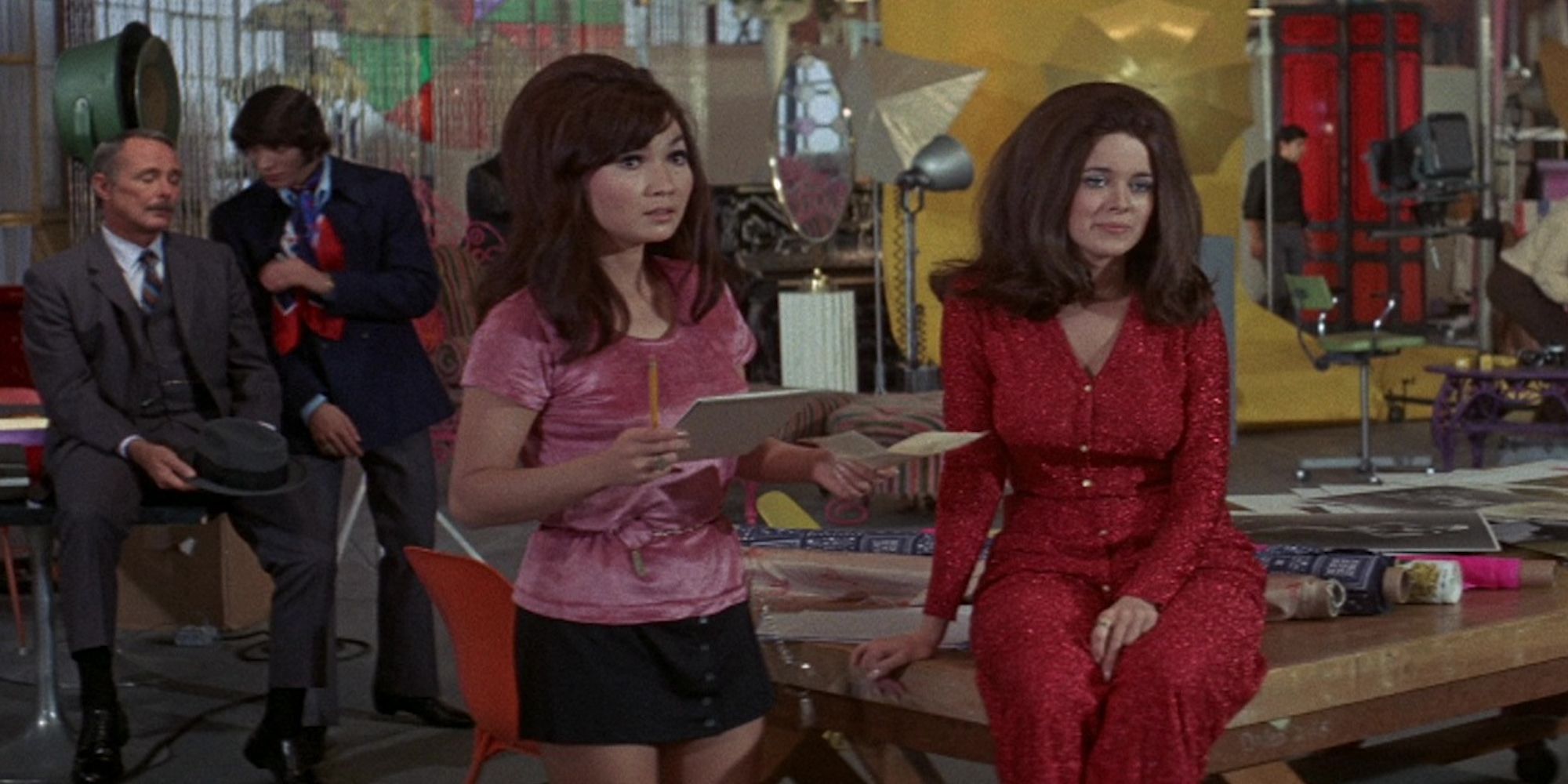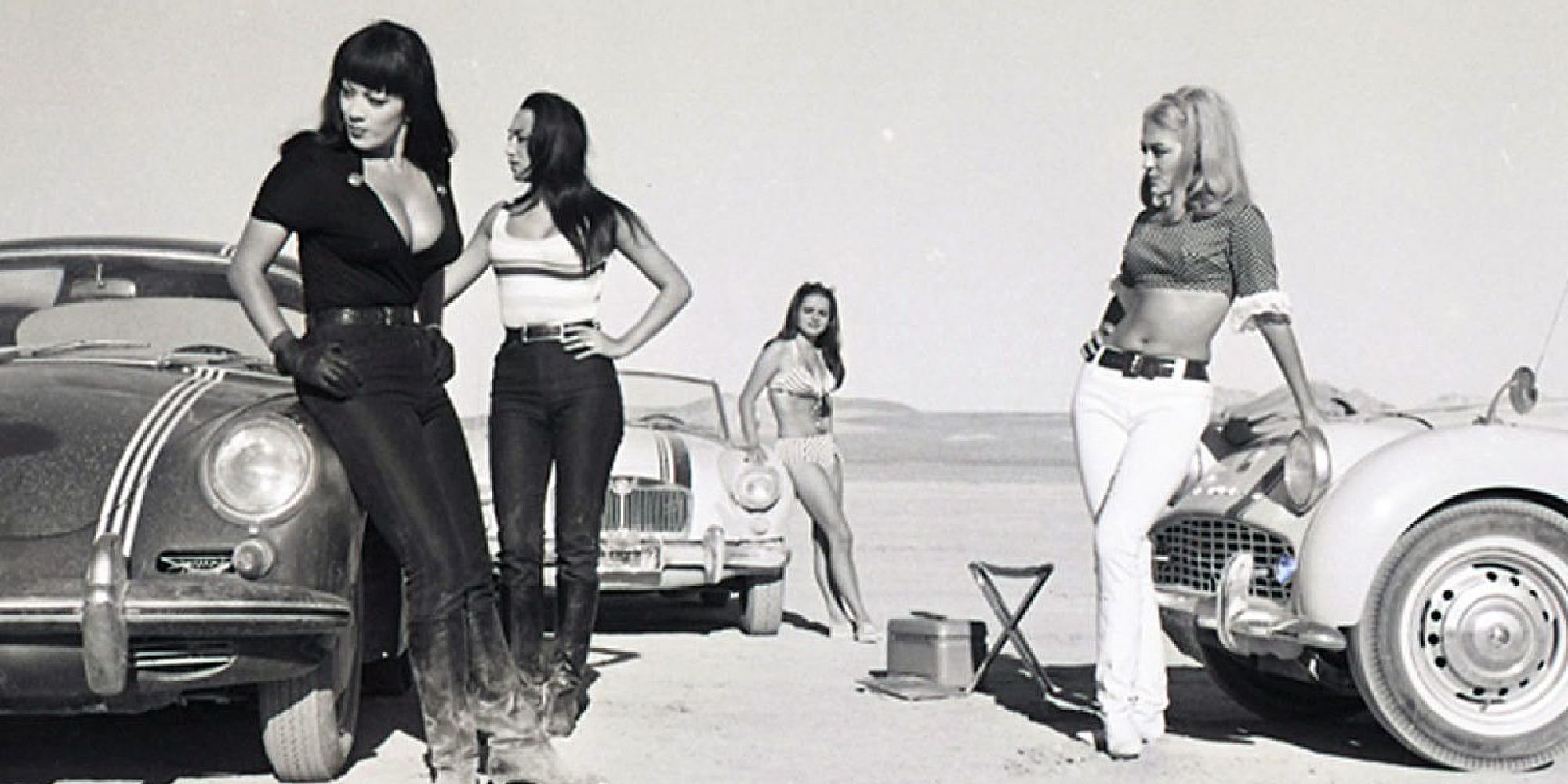Russ Meyer, a filmmaker active during the 1960s and ’70s, was an icon of exploitation cinema. He made over twenty provocative, zany movies, usually featuring nudity, sex, and a ton of over-the-top violence. Although he was often dismissed simply as a director of skin flicks, his projects feature unusual levels of creativity and craftsmanship. Many of them went on to become classics and inspired later filmmakers.
Meyer put a lot of effort into his work, even if many of his plots seem to have been written with reckless abandon. “You have to have the buildup, the dialog, the camera angle. You have to establish characterizations, so the scene will be convincing,” he explains. At their best, Meyer’s movies have a charm and frenetic energy that is totally out of proportion to their paltry budgets. A master of camp with bad taste strong enough to rival John Water, Meyer is an important part of film history. His films might not be for everyone, but no one can deny their transgressive importance to American cinema.
10 ‘Cherry, Harry & Raquel!’ (1969)
Charles Napier’s debut in the Meyer-verse
This lean, mean exploitation flick focuses on small-town Sheriff Harry (Charles Napier), who is involved in a criminal operation diverting marijuana across the border. However, the enterprise is threatened when one of their associates, Apache, goes solo, so Harry’s employer resolves that he must be killed. This is easier said than done, however, and Harry’s bumbling leads him to cross paths with the alluring Raquel (Larissa Ely). He soon finds himself entangled in a love triangle with Raquel and his English girlfriend, Cherry (Linda Ashton).
As with many of Meyer’s films, Cherry, Harry & Raquel! is notorious for its explicit content and unabashed portrayal of sexuality. Beyond its provocative nature, Cherry, Harry, & Raquel! showcases Meyer’s signature fast-paced editing, exaggerated characters, and madcap humor. There are some silly, tongue-in-cheek moments, like the opening narration about the dangers of weed, but this is for sure Meyer’s weakest film, being overly silly and not subversive enough.
Buy on Amazon
9 ‘Russ Meyer’s Lorna’
Meyer’s first “real” movie
Lorna (Lorna Maitland) is a bored small-town woman married to Jim (James Rucker), who spends his days working at a salt mine and his evenings studying. She is lonely and miserable, disconnected from the world around her. After a terrible attack by an escaped convict, Lorna’s desires are ignited, and she pursues a path of sexual self-discovery. She begins sleeping with several men, but when James discovers her infidelity, the situation threatens to explode.
A transitional project in Meyer’s filmography, Lorna retains the nudity and prominent sexual elements of his early work but also contains more drama and a significantly more fleshed-out narrative. In addition, the plot also gets darker and more violent, hinting at some of the more accomplished movies he would go on to make. Lorna is also an example of Meyer’s “rural gothic” film aesthetic, set against a rough backdrop of trees, pools, and overgrown fields.
Buy on Amazon
8 ‘Up!’ (1976)
An uneven yet worthwhile effort
Up! centers on Margo Winchester (Raven De La Croix), a woman who hitchhikes into a California town and stirs up all kinds of trouble. She meets with a motley crew of characters, including Sheriff Homer (Monty Bane), criminal Leonard (Larry Dean), and the mysterious Paul (Robert McLane). At the same time, it is revealed that Adolf Hitler (Edward Schaaf) has secretly been living in the area under a fake name until he is murdered by someone placing a piranha in his bathtub. As if this wasn’t wacky enough, all these events are commented upon by a Greek chorus.
Meyer directed Up! after the success of Supervixens, and he doubled down on the erotic elements. It wasn’t quite as successful, but it certainly stands out with its ludicrous plot. Up! might be Meyer’s most demented story, which keeps getting wilder and wilder; one has to admire his gonzo commitment, even if his taste is at an all-time low. Addressing criticism of the film, Meyer said, “Sure, it appeals to prurient interest. Why not appeal to prurient interest?”
Buy on Amazon
7 ‘Motorpsycho’ (1965)
Meyer’s groundbreaking gem
Motorpsycho! focuses on three thrill-seeking bikers who terrorize a small desert community. Led by the charismatic and sadistic Vietnam Vet Brahmin (Stephen Oliver), the trio is a force of chaos, engaging in a spree of violence and sexual assault. After they attack his wife (Holle K. Winters), Dr. Cory Maddox (Alex Rocco), a local veterinarian, becomes the reluctant hero as he tries to protect the community from the ruthless bikers.
Meyer directed this movie just before Faster, Pussycat! Kill! Kill! and there are many parallels between the two. Both movies are ultra-violent and feature cars prominently, though the main criminals in Motorpsycho! are men, while in Faster, Pussycat!, they are women. Beyond its questionable quality, Motorpsycho! is a truly groundbreaking picture, featuring one of the very earliest on-screen depictions of a character who had served in the Vietnam War. It perfectly summarizes Meyer’s unique ability to mix camp with incisive societal commentary, turning Motorpsycho! into one of his most fascinating pictures.
Buy on Amazon
6 ‘Mudhoney’ (1965)
Meyer’s period Southern Gothic experiment
“One man’s evil can become the curse of all.” Another Southern Gothic movie, Mudhoney takes place during the Depression era and tells the story of Calef McKinney (John Furlong), a man who passes through Spooner, Missouri, searching for work. He begins doing odd jobs for Lute Wade (Stuart Lancaster) and begins a relationship with Wade’s niece, Hannah Brenshaw (Antoinette Cristiani). However, she is married to the abusive Sidney (Hal Hopper), who hatches up a scheme with a crooked preacher (Frank Bolger) to have Calef locked up.
Mudhoney was a commercial disaster but has since been praised by some critics, most notably the late Roger Ebert, who called it Meyer’s “most interesting, most ambitious, most complex” independent film. Meyer himself is not so sure. “I got in a little bit over my head,” he said of Mudhoney. “That’s when I thought I was Erskine Caldwell, John Steinbeck, and George Stevens all in one.”
Buy on Amazon
5 ‘Beneath the Valley of the Ultra-Vixens’ (1979)
Satirical sexploitation at its finest
Beneath the Valley of the Ultra-Vixens was Meyer’s final movie as a director, and it’s a fitting capstone to his filmography. It’s satirical, poking fun at small-town communities, the exploitation genre, and even some of Meyer’s earlier movies. The film follows the lives of the eccentric inhabitants of Small Town, USA, as they engage in turbulent relationships and nonstop sexual escapades. A brilliant satirical movie that subverts even the most taboo subjects, Meyer has described Beneath the Valley of the Ultra-Vixens as a sexually charged send-up of Thornton Wilder‘s Our Town. The director also named it as his favorite film of his.
At the center of it all is Lavonia (Kitten Natividad), a nymphomaniac whose desires cause a whirlwind of audacious scenarios. She’s joined by some truly ridiculous characters, including an evangelical radio preacher (Ann Marie) who is in love with a dead Nazi. It may come as a surprise, but Beneath the Valley of the Ultra-Vixens was, in fact, co-written by Roger Ebert, as was Meyer’s Beyond the Valley of the Dolls.
Watch on Plex
4 ‘Vixen!’ (1968)
The quintessential Meyers movie
The tongue-in-cheek, taboo-smashing Vixen! revolves around Vixen Palmer (Erica Gavin), who lives with her bush pilot husband, Tom (Garth Pillsbury), at a Canadian wilderness resort. While her husband flies tourists around, Vixen has affairs with all and sundry, including a Mountie and some of Tom’s clients. However, things take an even more dramatic turn after a wealthy Irish passenger turns out to be an IRA sympathizer and hijacks Tom’s plane. Vixen and Tom are taken hostage mid-flight, and they must use all their wits (and perhaps Vixen’s wiles) if they are to make it out alive.
Vixen!‘s plot strings together a stream of erotic scenes, which are conveyed with abundant humor. The movie does not take itself seriously at all and is essentially a parody of the skin-flick genre itself. This probably made it more accessible to audiences at the time, and it was a huge financial success, supposedly grossing $6 million against a $72,000 budget. Considered by Roger Ebert to be the best skin-flick and the quintessential Meyers film, Vixen! now has a life of its own as a camp and cult classic and one of Meyer’s best-known efforts.
Buy on Amazon
3 ‘Supervixens’ (1975)
A classic of camp cinema
“What you need is a long fuse and a big bang.” Supervixens chronicles the adventures of Clint Ramsey (Charles Pitts), a gas station attendant who finds himself pursued by various demanding and hypersexual women, all of whom have “Super” in their name: SuperAngel (Shari Eubank), SuperSoul (Uschi Digard), SuperLorna (Christy Hartburg), SuperCherry (Colleen Brennan), and SuperEula (Deborah McGuire). He is also targeted by the corrupt cop Harry Sledge (Charles Napier), who seeks to frame him for murder.
Supervixens is one of Meyer’s most fast-paced and no-holds-barred spectacles, and it was a big hit with audiences. Director Edgar Wrightcalled Napier’s character acting in the film “legendary.” Meyer himself said that Napier’s performance was a big part of the movie’s success. “Napier, I think, has a quality that few actors possess […] There can be just a thin edge separating evil and humor, and [he works] both sides of that line,” he said. Today, Supervixens stands as one of Meyer’s best-known and most acclaimed movies, a feminist take on the sexploitation genre that challenges notions, expectations, and taste levels left and right.
Watch on Plex
2 ‘Beyond the Valley of the Dolls’ (1970)
The cult classic to beat all cult classics
“Step into my web said the spider, etcetera.” A spoof of the original Valley of the Dolls, Beyond the Valley of the Dolls was written by Roger Ebert as a psychedelic and irreverent take on the music industry and Hollywood excess. It’s about an all-female rock band, The Carrie Nations, comprising Kelly MacNamara (Dolly Read), Casey Anderson (Cynthia Myers), and Pet Danforth (Marcia McBroom), who must navigate the glamorous yet perilous world of the LA showbiz scene. The narrative takes unexpected twists and turns, involving love triangles, betrayal, and the dark underbelly of fame.
The central question is whether the characters can make it out of this pit of vipers in one piece. Like the movie that inspired it, Beyond the Valley of the Dolls was a critical disaster but achieved commercial success. Its reputation has improved over the intervening decades, and now, Beyond the Valley of the Dolls is considered something of a cult movie praised for its melodrama, campy charm, and musical elements. It takes great confidence to portray what Meyers does in this film and get away with it. The filmmaker is at his most confident here, offering a brilliant, wicked, and unabashedly campy satire that remains as fresh today as it was in the ’70s.
Rent on Amazon
1 ‘Faster, Pussycat! Kill! Kill!’ (1965)
“Dialog to shame Raymond Chandler”
“The point is of no return, and you’ve reached it!” Faster, Pussycat! Kill! Kill! represents the pinnacle of Meyer’s exploitation powers. Here, he confidently serves up delectably cheap thrills and a relentless plot centering on three go-go dancers with a taste for fast cars and violence. The trio, Varla (Tura Satana), Rosi (Haji), and Billie (Lori Williams), set out on a spree of kidnapping, killing, and chaos.
It’s heavily stylized: the characters have entertainingly larger-than-life personalities, and the whole thing plays out like a live-action cartoon. More than that, Faster, Pussycat! is also intriguing in the way that it subverts genre roles. The protagonists are powerful, independent figures who dominate and subdue the men they encounter in the desert, presenting an early and broad yet undeniable and unashamed and form of feminism. Although it failed to connect with audiences on release, the film became a cult classic over time. It influenced a host of directors that followed, including John Waters, in many ways Meyers’ heir regarding bad taste, and Quentin Tarantino, who references the film in the credits of Death Proof.
Watch on Roku


